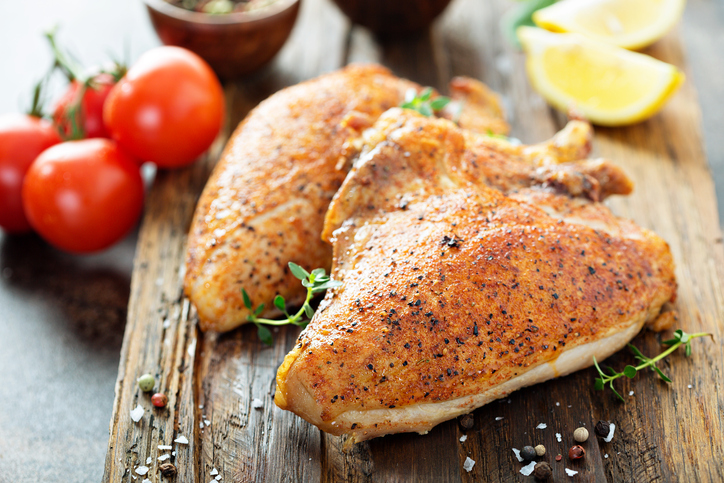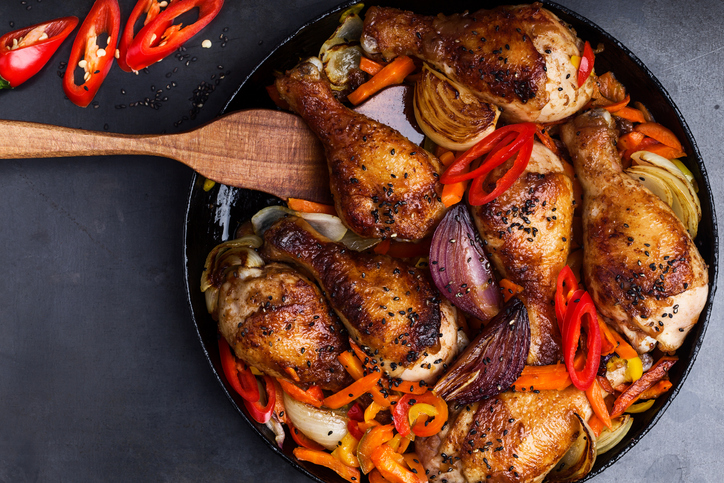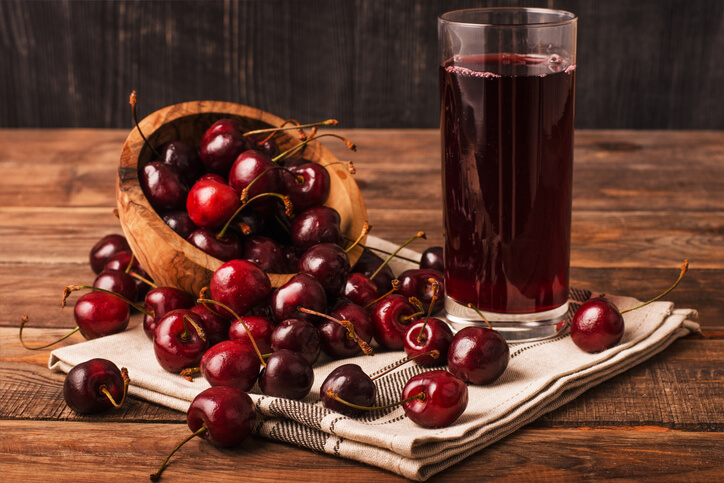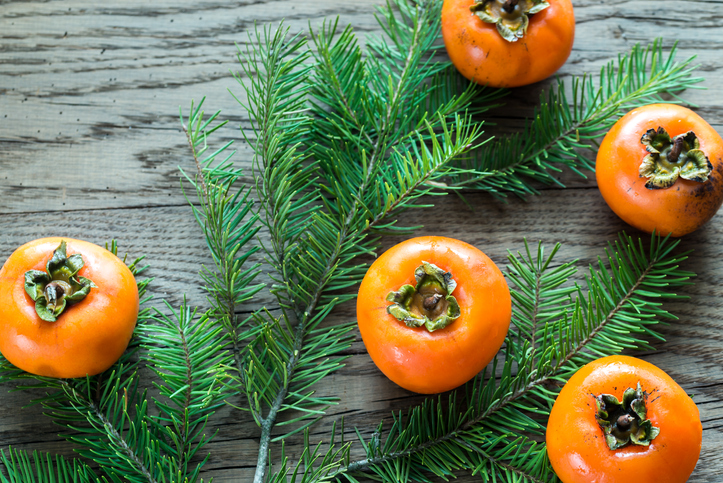Yes, Chicken Skin Can Be Part of a Healthy Diet!

By Joy Stephenson-Laws, J.D., Founder
It always fascinates me how a food – take eggs, for instance – can be considered “healthy” for the longest time and then overnight be condemned by health experts as “unhealthy” only to regain its “healthy” status a while later. One of the latest foods finding itself moving from the “don’t eat this” category to the “well, actually, it’s healthy” camp is the ubiquitous chicken skin.
As a reminder, medical professionals – from cardiologists to nutritionists – warned us of the health risks of eating chicken skin. Most of us dutifully began removing the skin from our chicken before cooking it or, at the very least, before eating it if we left it on during cooking. Many of us also cut back on other items on our grocery lists to be able to afford the more premium-priced “skinless, boneless chicken."

But it wasn't always this way.
For as far back as many can remember, perhaps even as far back as ancient Greece when chicken “was discovered,” the skin was considered – and prepared – as a dish in its own right in many different cuisines. Often considered a guilty pleasure, it is served deep fried in the Philippines where it is known as chicharon manok; yakitori kawa in Japan; and in traditional European Jewish cooking, it is called gribenes. The latter was a very popular snack until chicken skin was exiled from the culinary mainstream.
Now, to the joy of chefs and chicken-skin-lovers all over the world, the tides have turned, and this humble foodstuff once again has the medical and health community’s seal of approval. Here’s why:
- One reason chicken skin fell out of favor was its fat content (it has 40g of total fat in a 3.5 ounce serving). But most of this fat is unsaturated fat, which actually can support heart health since it is associated with lowering cholesterol and blood pressure. It also contains the healthy oleic acid. And its saturated fat supports the immune system and hormone production.
- Baking, grilling or roasting chicken without the skin can leave the meat dry and less flavorful. To compensate, many people end up oversalting their chicken, and consuming too much sodium is not healthy.
- In addition to healthy fat, 3.5 ounces of chicken skin also has 20g of protein along with small amounts of iron, potassium, and calcium. As a bonus, it has neither carbohydrates nor sugar.
- More flavorful food – such as chicken cooked with its skin on or eating the skin itself – may help reduce post-meal food cravings, which could rack up far more calories than the 90 or so in one ounce of chicken skin.
- Credible research suggests that monounsaturated fat (which is about 42 percent of the unsaturated fat in chicken skin) may reduce the risk of breast cancer. Unsaturated fat may also help manage blood glucose levels.
- Chicken skin may have anti-aging properties since it has the amino acid glycine, which helps promote the production of collagen – and collagen helps keep our skin elastic.
Beyond just eating the skin off the roasted chicken breast on your plate, the other ways to prepare, serve and enjoy chicken skin are limited only by your imagination. These include:
- Baked crispy chicken skin appetizers, also known as cracklings
- Chicken skin tacos
- Air-fried chicken skin garnish for salads
- Chicken skin dippers (use to scoop spread such as guacamole)
- Grilled chicken skin and vegetables
As with other foods, how you prepare and cook chicken skins can make the difference between their being “healthy” and being relegated to the “no way” category. For example, while broiling, baking and roasting are fine, frying is not since it can greatly increase the fat content (and calories).
While chicken skin is now out of the dietary doghouse, this does not mean that you should overindulge. As with most everything else in life, it is best to enjoy it occasionally in moderation due to its high omega-6 fatty acid content, which has been associated with inflammation. I like to compromise by leaving the skin on my chicken while it is cooking but then removing almost all of it before serving it to my family. It’s also important to avoid charred/overcooked chicken skin since it has little, if any, nutritional value and may even pose a health risk due to possible carcinogens in burnt meats.
Enjoy your healthy life!
The pH professional health care team includes recognized experts from a variety of health care and related disciplines, including physicians, attorneys, nutritionists, nurses, and certified fitness instructors. This team also includes the members of the pH Medical Advisory Board, which constantly monitors all pH programs, products, and services. To learn more about the pH Medical Advisory Board, click here.







